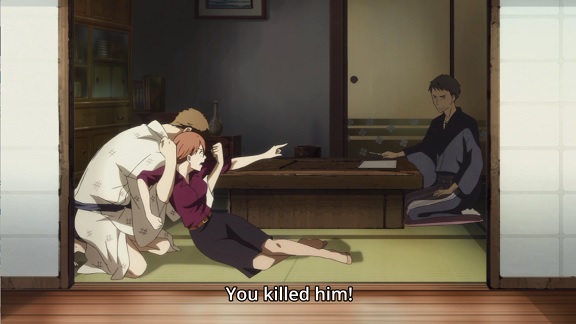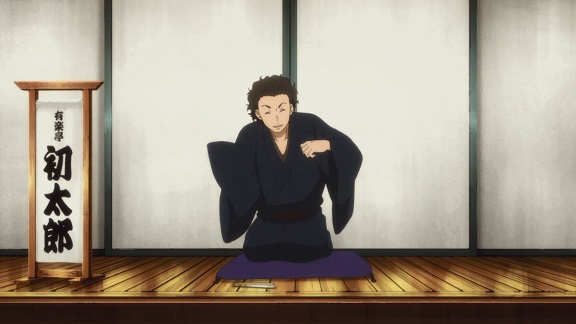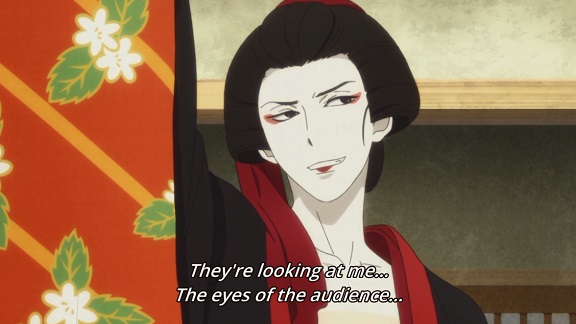The best anime of the year for me was a series in which I watched men in Shouwa Era Japan sitting on stage in a theatre telling stories in which they portray every character using nothing but a small fan or a small cloth as a prop, as animated by a studio that had become synonymous with hack work. Yet with Shouwa Genroku Rakugo Shinjuu Studio Deen managed to do the impossible, to have complete rakugo performances and keep my interest for the full performance, though all you see is a man sitting on stage. I went in blind watching the first episode and only realised it was fortyeight minutes long when it was already over.

That first episode, in which a young man just out of prison becomes the apprentice of a famous rakugo performer, gets obsessed with the rakugo of said performer’s late partner through the influence of the late partner’s daughter and has to prove the value of rakugo to his old gang boss, is actually a bit of a red herring. The rest of the series actually flashes back to the early days of his master and his late partner, in order to answer the accusation that he actually killed him. I didn’t realise this would be the case when I watched the series, so the first couple of episodes I kept expecting to pop out of the flashback; instead we’ll get a new series next season.

The series therefore only starts from episode two, in which Bon, the young son of a geisha who had become crippled in an accident, is apprenticed to Yakumo Yurakutei VII, the Seventh Generation rakugo performer to use that name — with Bon ultimately having become the Eight Generation as he is in episode one. Bon is given the name of Kikuhiko by his new master and likewise another boy who’s also apprenticed on the same day is christened Sukeroku. Whereas Kikuhiko is stiff and uptight and only coming to rakugo because he has to, Sukeroku is brash and easygoing and already loves it. They become friends and fellow performers and the series follows them until that faithful day that Sukeroku died. All of which happened some thirty-forty years before the present of episode one, which is the early seventies, starting before the war, with Sukeroku’s death some twenty years before episode one.

At the heart of the second episode are the first performances of Kihuhiko and Sukeroku: the former is stiff and has memorised his performance, but brings no live to it, while the latter is funny and full of character. Much of the tension between the two friends revolves around this, about Kihuhiko’s perfectionism against Sukeroku’s much more lax but more interesting performance, with Kihuhiko at first chasing Sukeroku, groping towards finding his own style of rakugo to be able to get a similar response from the crowd as he does. Most of this is shown from Kihuhiko’s point of view, as he’s the one telling this story. It’s clear that he both envies Sukeroku and loves his rakugo.

Performance is at the heart of Shouwa Genroku Rakugo Shinjuu and the series is never afraid to show complete performances. There’s little of the trickery that can be done to keep an audience’s attention when you’re afraid what’s on stage isn’t that interesting. Instead it makes full use of the capabilities of anime to show exactly the right gestures, eye movements and other subtle cues to keep you on your toes; this is not a series that could be easily reproduced as live action, even if it doesn’t start giant robots. If you want to judge for yourself, the series is available at Crunchyroll.
This was day twelve, the last day of the Twelve Days of Anime.